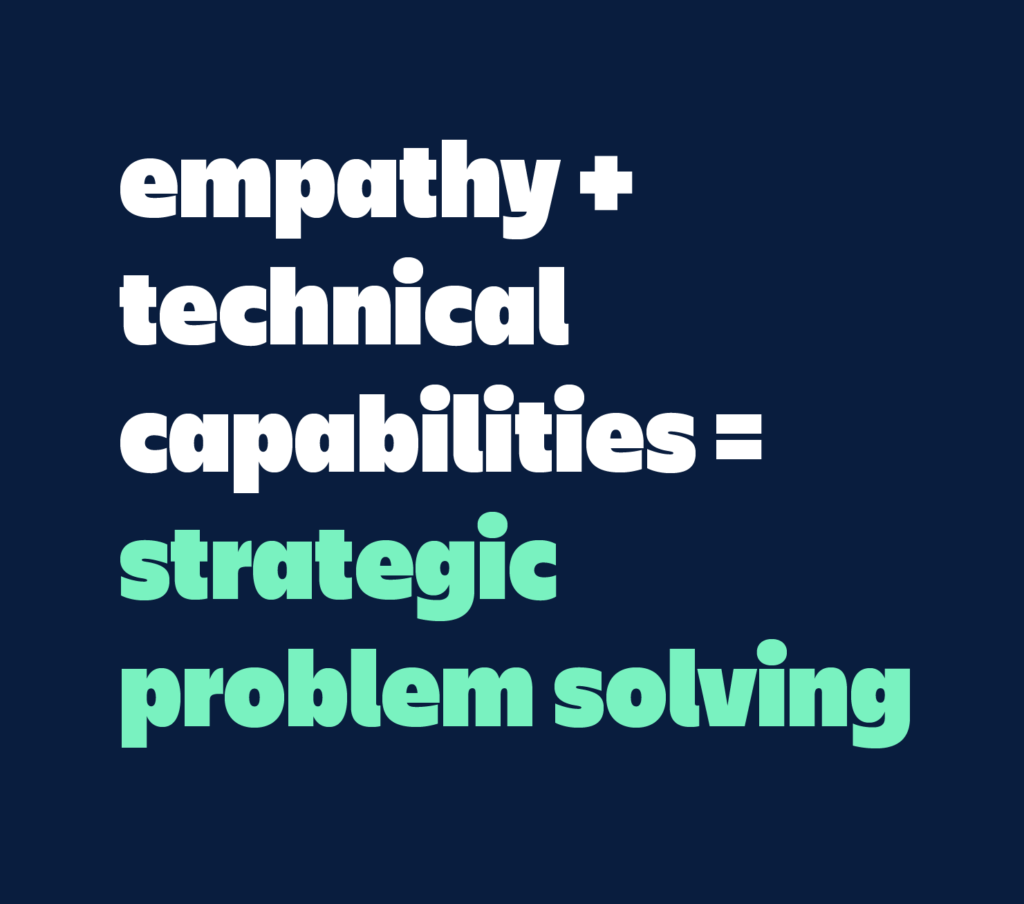How do I build a great product? What should I build next? How do I solve this design problem in a way that will delight my customers?
These are only a few of the big questions that Atlassian Marketplace Partners like you face every day as you build and scale your apps in the Marketplace. If you're a lean team trying to work fast and build extraordinary things, you might not have a ton of time to dwell on your core product or marketing strategy.
Knowing that a lot of our Marketplace Partners fall into this bracket and don't have dedicated product managers, we want to share some tips and resources on how to think like one to help guide your product direction.
What do product managers do?
Product managers are tasked with connecting customer needs to actionable business objectives, ensuring that products and features are successful. A big part of the role involves having empathy for your customer, understanding the technical capabilities of your product and which customer pain points it addresses, and finally, finding workable solutions.

Empathy: an underrated skill
How often have you been asked to put yourself in someone else's shoes? Making assumptions about someone else's feelings, needs, and wants might seem simple on the surface, but achieving true empathy is a more difficult task. Even if you intuitively see a problem and have a solution, there are other people in the equation (your customers!) to consider.
In order to come up with successful solutions to messy product problems, you need to start from a place of empathy. But the good news is that empathy is like a muscle – the more you exercise it, the more easily you can use it in the future.
Here's a few ways to build empathy with your customers:
Get out and listen
Whether you're aware of it or not, we all exist in a bubble. Getting out of your comfort zone and finding new people to talk to is a fast, easy way to build empathy and learn a lot in the process. You could start by just chatting up customers, dive deeper and launch a user survey, or get involved in online communities like the Atlassian Developer Community.
One Atlassian developer, Amaresh Ray, would cold message members of the Community to discuss his product and ask if it would improve their day-to-day lives. Although reaching out cold can be tough because you aren't starting from a place of trust, it can be a great way to start gathering feedback. Plus, customers might be flattered if you ask for their input on the future of your Marketplace app!
Understand the what and the why
Maybe all of your customers are asking for a time tracking feature, but it's been pretty low on your team's list of priorities. Understanding why they want this feature can help you better prioritize and drive customer loyalty at the same time. By asking "why" and getting to know their business challenges, you can take effective action and build an app that addresses a need in the Marketplace.
Validate your assumptions
Once you've listened to your customers and come up with a viable solution to suit their needs, it's important to close the loop by validating your assumptions. An easy way to do this is by repeating back what someone said and asking for confirmation: "I think what you're saying is that a time tracking feature would help you bill clients more accurately — does that sound right?" Confirming your customer's needs before you write a line of code can be a huge time saver for your entire team.
Tapping into your inner product manager
Product management is a multidisciplinary role, and product managers often come from many different backgrounds that aren't always technical.
No matter what your background is, there are a few technical skills product managers need to bring to the conversation: a technically sound understanding of the product, the ability to locate and empathize with customers, and, most importantly, an understanding of the larger business needs, including company strategy. As a Marketplace Partner, you probably have a decent understanding of the technical aspects of your app, but may want to adopt some product management skills and practices to help strategize and plan.
Conduct product research
As I explained above, product and market research doesn't need to be an expensive, lengthy process. It can be as simple as finding where your customers are and listening to their unique use-cases and challenges, then mapping out how your product can meet their needs. Once you understand what your customers need your product to offer, it's time to create a plan.
Develop a product roadmap
It's hard to get to your destination without knowing where you're going. A product roadmap can help you outline what new features and updates your team will launch and when.
Most of your roadmap time for a new product should be spent prioritizing new features (versus time allocated to fixing bugs for existing products). With a finite amount of development resources, it can be difficult to pick what to work on first — or not at all. And once you figure this out, how do you decide what to work on first, and then communicate this to your customers?
Writing all of your features down on a dry erase board and asking your team to rank them is a great place to start. If you do have a customer base, no matter how small, you can try tracking trends and seeing if the same feature requests come up repeatedly. You can also try the $1 prioritization game, which is a fun way to decide where you should spend your time.
Amaresh Ray also points out that one advantage of being a "smaller" marketplace partner is the ability to be agile. You can use this strength to your advantage by quickly responding to customers about concerns or feedback, or adding new features to your roadmap.
Manage using Agile
Agile Management involves working on small, measurable chunks of projects that build towards a greater goal. Many Marketplace Partners have found it to be a helpful way to work quickly and effectively. For more information, take a look at Atlassian's Introduction to Agile Management.
Getting started with strategic problem solving
Without a structured way to approach product problems, you risk missing addressing your customer's needs. Atlassian developed the Team Playbook to give Marketplace Partners a starting point for a lot of the approaches we mentioned above. From customer interviews to kicking off a project, the playbook has you covered.
What does success look like?
Now that you've developed new processes and new ways of thinking, It's time to measure your success. A popular way to do this is to base it on metrics like number of downloads, positive reviews, or revenue. Once you've figured that out, it's time to validate if you did what you set out to do, and if it had the impact you intended. What you learn might surprise you — and cause changes to your product roadmap or development process (and this is a good thing!).
Finally, product management isn't always a linear process. You might be thinking hey, I'll do a little research, write a little code, and boom, success! But the road can often be a winding one, with multiple detours to test, analyze, and validate results — and then sit down and write more code. One guarantee is that your product will get better with each iteration.
Growing a company requires a lot of skills most people don't have from the start: from marketing to engineering, we're all learning as we go along. The road to success involves taking the strengths you already have, and picking upt the tools you need along the way to help you learn even more and build a product you can be proud of. And don't forget to celebrate the little victories along the way – our team at Atlassian is rooting for you.
To connect with other Marketplace Partners about how they approach product management, join our Developer Community.
